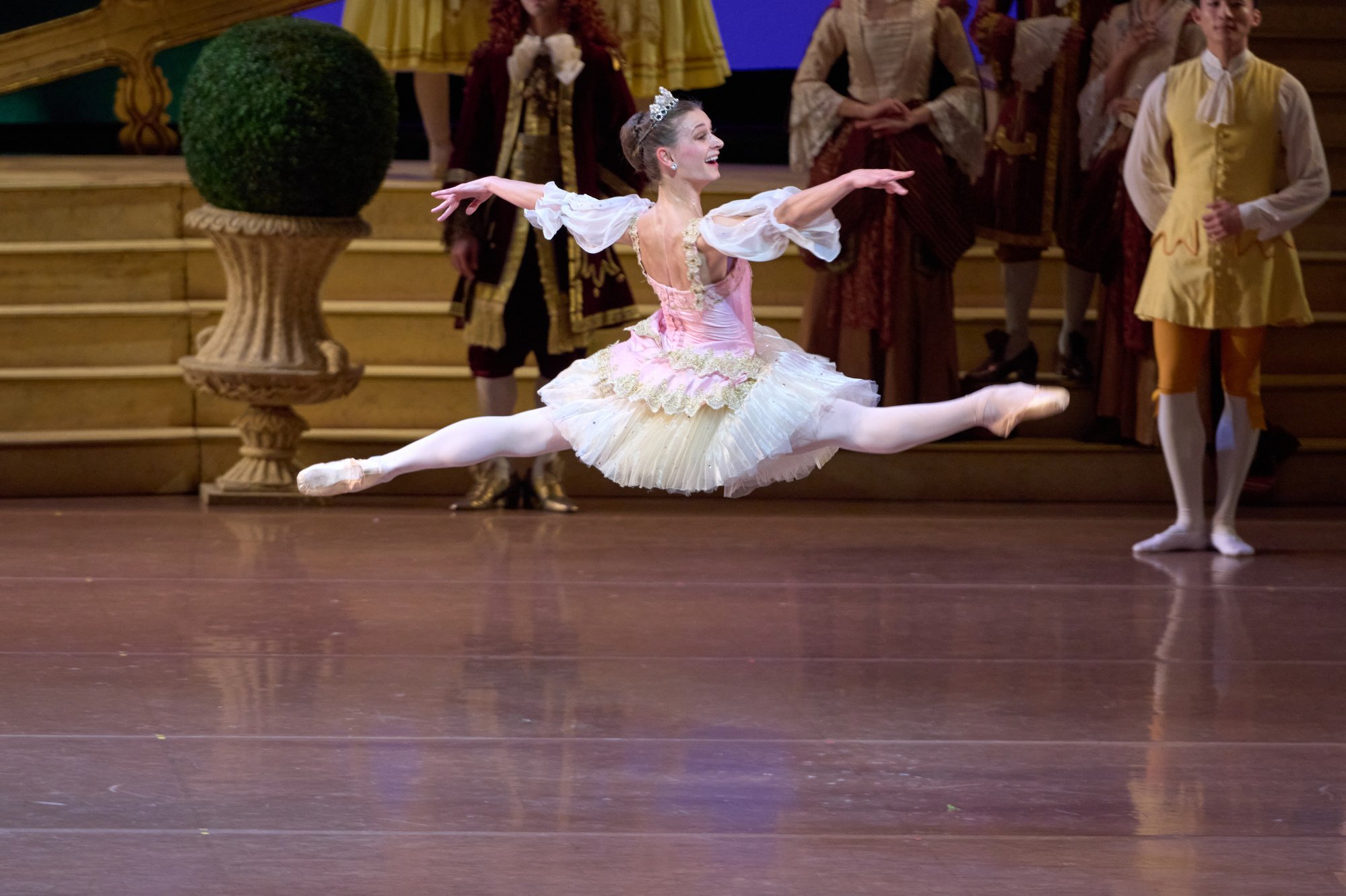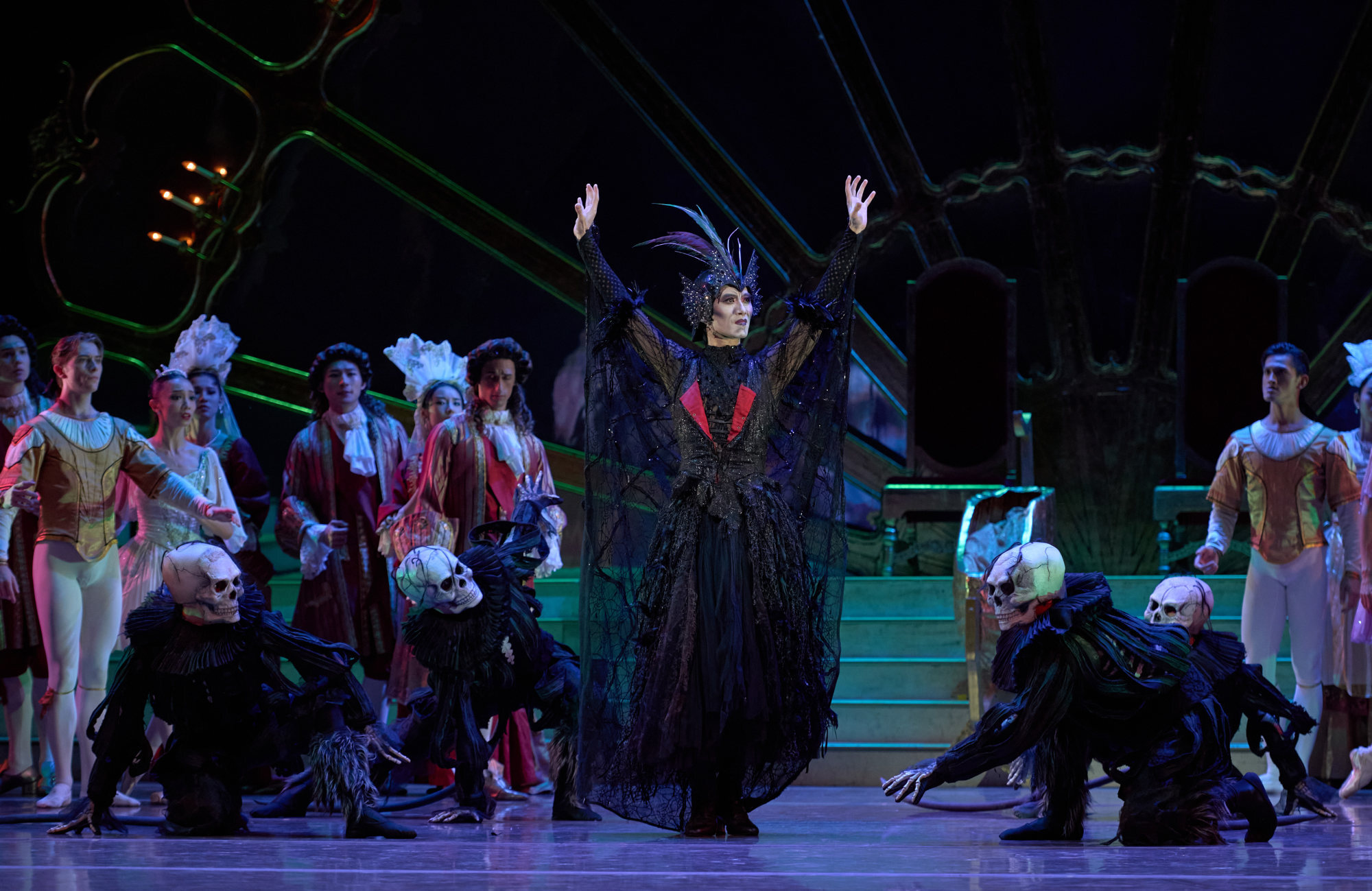
Review | Hong Kong Ballet’s The Sleeping Beauty marked by ravishing performances and a joyous farewell, but shame about the setting
- Ye Feifei and Amber Lewis gave two quite different yet equally outstanding interpretations of Princess Aurora, strongly partnered by Daniel Camargo and Wei Wei
- Eleven-year-old Matsuharu Wesley Lai looks like a future star, but they all deserved better than Cynthia Harvey’s 2010 production and the clunky set
The opening night of Hong Kong Ballet’s first revival of The Sleeping Beauty since 2015 was distinguished by ravishing performances from Ye Feifei as Princess Aurora and guest artist Daniel Camargo – who put up with another round of quarantine to be here – as her Prince, strongly supported by Wang Qingxin’s serene yet commanding Lilac Fairy and Wei Wei’s masterfully malevolent Carabosse.
The closing night saw a stunning debut from Amber Lewis in the title role, partnered by Wei; this was his farewell appearance as a principal dancer and the evening ended with a joyous onstage celebration paying tribute to his 19 years with the company.
These fine performances deserved a better setting than Cynthia Harvey’s 2010 production, which fails to do justice to Marius Petipa’s masterpiece. While the Prologue and Act 1 are given in their entirety, Harvey has shortened Acts 2 and 3 which makes for a lopsided structure, with a glaring contrast between the quality of the first half and the cut-down, cursory treatment of the rest.

The role of Aurora is Petipa’s ultimate homage to prima ballerinas, and Ye and Lewis gave two quite different yet equally outstanding interpretations.
Ye was a gentle yet imperious princess, sailing regally through the technical difficulties, her sumptuous back and arms and long lines an ideal example of the grand classical style. She was perfectly matched with Camargo, who partnered her superbly and produced world-class solos including a thrilling series of grands jetés leaps and beautifully landed double tours en l’air.
Lewis’s vividly realised Aurora was an eager young woman full of warmth and life, again showing her ability to connect with her fellow dancers and her audience. Her dancing was blissfully assured, bright, fresh and full of attack.
This was a special night for Wei and he delivered an impeccable performance as the Prince, with elegant lines, clean finishing and fine partnering. It was a charming touch to have Ye, the company’s prima ballerina who has been Wei’s partner in so many ballets, take the small role of the Marchioness to dance with him a final time.
No ballet is a better barometer of a company’s classical level than The Sleeping Beauty. It calls for the highest standards of technique and classical style, not just from the principals but in a multitude of roles – and the choreography leaves nowhere to hide. This, together with the grandeur of scale of both the choreography and Tchaikovsky’s glorious score, makes it a particular challenge for a company the size of Hong Kong Ballet. Although the general standard of dancing was good, this run suggests the current ensemble lacks strength in depth when it comes to purely classical work.

This was especially apparent in Act 3, which was of mixed quality at both shows. In the iconic Bluebird pas de deux, Nana Sakai as Princess Florine was enchanting and exquisite, and Wang Zi showed promise with some lovely light jumps. However, on the first night, although Albert Gordon’s Bluebird solos were excellent, the duet sections with Yang Ruiqi were well below par.
Best of the first night was a witty White Cat and Puss in Boots pairing of Reina Sawai and Jonathan Spigner, the latter spitting out Bluebird feathers at the curtain call in typically mischievous fashion.
As is often the case, the troupe as a whole were in better form on the last night, with several shows under their belt, than on the first. The Prologue was particularly good. All the fairies performed their variations with lightness and precision, with Jessica Burrows and Zhang Xuening being stand-outs, while their cavaliers produced impressive jumps and beats in their group sections. There was a fine Garland Dance from the corps de ballet in Act 1, too.



It was a pleasure to see one of the company’s best-loved former ballerinas, Ayako Fujioka, back on stage in a touching performance as the Queen, with Luis Torres as her stalwart King. Matsuharu Wesley Lai stood out as the royal page as well as in the Garland Dance. Someone with this much stage presence at just 11 years old must surely be a future star.
The Sleeping Beauty, Hong Kong Ballet, Grand Theatre, Hong Kong Cultural Centre. Reviewed: October 15 and 17 evening performances.

